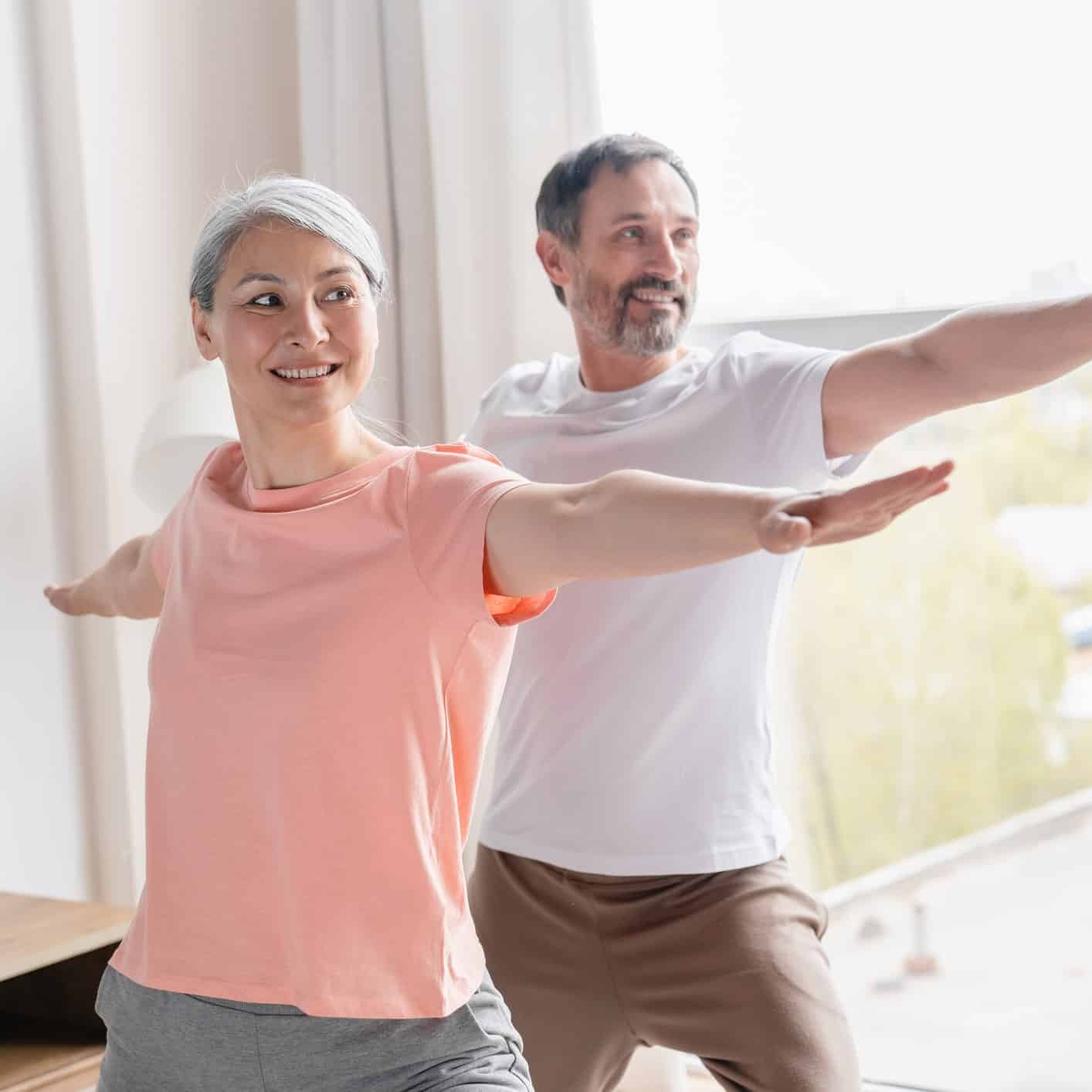Exercise and physical activity are essential aspects of a healthy lifestyle, and this is especially true as we age and fall risk increases. More than 25% of adults aged 65 and older fall every year, and three million need to go to the ER due to injury. Injuries from falls can affect daily life and impact your independence.
Last week, we discussed how the ear and our sense of balance are connected. Now let’s talk about how you can strengthen your balance. Here are some simple exercises you can do from the comfort of your own home to strengthen your lower body and hone your sense of balance to reduce the risk of falling or the likelihood of a serious injury in the event of a fall.

Exercises for Leg Strength
Below are some exercises targeting muscle strength in your legs and lower body. They should feel somewhat challenging at first, but get easier as you practice and get stronger. You should stand near a wall or have a surface (like a table) in front of you while doing these exercises so you have something to reach for if you start to lose your balance.
Sit to Stand
Begin by sitting in a sturdy chair—not a soft armchair or couch; you want something firm to support you. Also, don’t use a rolling chair, rocking chair or any chair that will move. As mentioned, have a surface in front of you that you can reach for if you feel unsteady.
You’ll now get up from a sitting position to a standing position. Lean your chest forward and shift your body weight over your thighs. Push yourself slowly into a standing position. If necessary, you can use your hands to push on the arms or seat of the chair, but the goal is not to use your hands at all. Stand for a moment, then lower yourself back down to a sitting position. Engage the muscles in your buttocks and behind your belly button to help lift and lower. Repeat five times if you’re starting out, ten times if you can.
Standing Heel Raises
In a standing position, place your hands on a chair or surface before you. Slowly rise onto your tiptoes, then lower yourself down. This movement will work the muscles at the back of your lower leg, above your ankle and below the back of your knee. Try not to put too much weight on the surface in front of you; rather, use the surface to keep yourself steady, and lift yourself up using just the muscles in your legs and feet. Do this motion continuously for thirty seconds if you’re starting out, then challenge yourself to do it for a minute.
March in Place
This exercise primarily targets leg strength, but it also benefits balance, making it great for fall prevention. Start in a standing position with a wall behind you or a table or chair in front of you. March in place, making an effort to lift your knees as high as you can. Engaging the muscles behind your belly button can help with balance. Start with twenty steps, then increase to thirty once you feel stronger.
Exercises for Balance
Since these exercises will test your balance, it’s a good idea to do them with someone watching. Also, like the strength exercises, have a chair or table in front of you or a wall behind you so you have something to reach for if you need it.
Romberg Exercise
The Romberg exercise may seem simple, but it vastly improves your sense of your body’s position and engages all the muscles you need to maintain stability. Not to mention, it’s actually more challenging than you might expect. Stand with your feet together and your arms at your side, and hold the position for thirty seconds. Do not stand with your feet hip-width apart. Once you feel confident with this posture, try holding the position with your eyes closed.
Stand on One Leg
In a standing position, place your hands on a chair or surface before you. Lift one leg up, bending at the knee and swinging your ankle up behind you in an arc. Hold for thirty seconds, lower and lift the other leg in the same way. Like with the heel raises, try not to put your weight on the surface in front of you.
When to See a Doctor
Exercises like these are proven to benefit muscle strength, balance and gait, all of which can help reduce fall risk. While you can never completely prevent a fall, you can reduce the risk.
If you feel dizzy or experience vertigo while working on balance exercises, you might consider meeting with a balance specialist. Call Southwestern Hearing & Balance to find out more.
